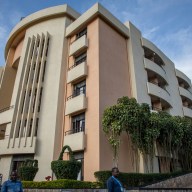Last week, while cycling home from the office, I was almost flattened by a car charging through a red light. This came moments after I was nearly run off the road by another careless motorist who mistook my bike lane for a turning lane of his own.
Welcome to Bike Month in Metro Vancouver.
This being June, the annual push is on to get locals onto this more sustainable mode of transport.
But don’t be fooled by the cheery speeches or beefed-up Critical Mass rides: Bike mode share — the number of cyclists on the road compared to motorists, transit riders or pedestrians — is disappointingly small in this region.
This shouldn’t be.
But a major sticking point for many would-be cyclists is safety. Some folks don’t feel comfortable riding with traffic.
And why should they, when bikes lanes have become the domain of parked airporter buses and delivery trucks, not to mention wayward cars.
So it’s encouraging to see local leaders going beyond the usual paying of lip service on this issue, and making some real headway.
As Coun. Geoff Meggs noted on his blog last week, Vancouver city council has recently committed to double its spending on cycling.
The investment will go toward improving existing bike routes, creating new cyclist-activated signal crossings and other infrastructure, plus car-free trials in four neighbourhoods. There’s also a long-term, much-needed plan focused on bike lanes that are separated from traffic.
All of this represents real progress — and a template that other jurisdictions in Metro Vancouver would be wise to emulate.
*****
TransLink didn’t waste any time responding to my column last week, detailing my frustration waiting for the No. 44 bus — a service that never arrived — on a recent morning. According to spokesperson Drew Snider, the bus was rerouted because of unannounced roadwork by the City of Vancouver.
Getting information out about such a last-minute rerouting, says Snider, involves process and time — in this case, 45 minutes until it was announced on TransLink’s website.
Still, during my wait, no notice was posted to the bus stop. And for nearly an hour, TransLink’s customer information agents were themselves left in the dark.
But I’m sympathetic to Snider’s assertion that “stuff happens.”
Of course it does — and most folks would agree. The key is that when it does, the best information is relayed to transit customers as soon as humanly possible.
















